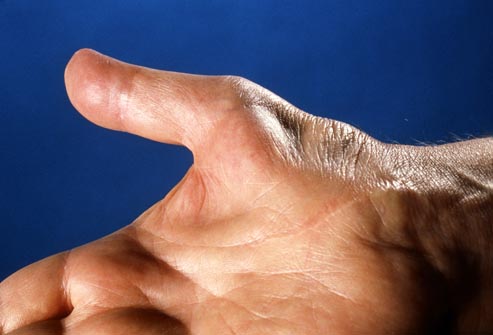One of the most common causes of hand and wrist pain is a condition called Carpal Tunnel Syndrome. This condition is usually the result of the median nerve getting trapped and compressed in the carpal tunnel as it courses towards the hand.
The carpal tunnel is a tunnel in which the bottom and sides of the tunnel are formed by the carpal or wrist bones and the top is formed by the transverse carpal ligament. This ligament or fibrous band connects the top two carpal bones. Inside the carpal tunnel is the median nerve as well as 9 of the flexor tendons for the fingers and thumb. The purpose of the carpal ligament is to stabilize the carpal bones and anchor some of the tendons for the hand muscles (finger flexors) to enable them to work correctly.
Carpal tunnel syndrome occurs due to compression of the median nerve running through this tunnel. The compression can be due to swelling of the tendons, inflammation of the tendons, overall fluid retention in the body (due to pregnancy, allergies, or other inflammatory conditions) and over-use injuries (such as typing).
Carpal tunnel syndrome can be classified as mild, moderate or severe.
Mild carpal tunnel presents as primarily sensory symptoms with numbness and tingling of the fingers and hand. As the median nerve gets more compressed the symptoms of carpal tunnel syndrome becomes more severe and the motor component of the nerve gets involved. When this happens, weakness and atrophy (muscle wasting) can be seen.
Common Symptoms of Carpal Tunnel Syndrome:
Mild:
- Numbness, tingling or aching of the thumb, 2nd, 3rd, and part of the 4th fingers
- Nighttime hand/wrist pain and numbness
- Difficulty typing, or with fine finger movement involving the first 3-4 fingers
- Numbness and tingling which worsens when the wrist/hand is bend at a right angle (either flexed forward or extended backwards)
- Electric shock sensations radiating into the hand
- Pain that radiates from the wrist upward towards the elbow
Moderate to Severe: (in addition to above symptoms)
- Weakness in hand grip
- Dropping objects from the hand
- Muscle wasting in the palm of the hand, especially at the base of the thumb
For mild symptoms the use of a wrist splint at night will be helpful. These splints can be purchased over-the-counter at a pharmacy or medical supply store. The splint should have Velcro or adjustable type straps and should have some sort of support or rigid material on the underside of your wrist and palm, that will prevent your wrist from bending forward too much. The splint should be worn at night to prevent inadvertent wrist bending, and can be worn during the day if symptoms are continuously present.
Certain exercises may exacerbate carpal tunnel syndrome such as push-ups, planks, and low jacks. Any exercise which puts pressure through the wrist while it is at a 90 degree angle from the arm can further compress the median nerve in the carpal tunnel. Helpful exercise modifications include doing push-ups on your fists and keeping your wrists straight, or doing the push-up on an incline (with your head higher than your feet) so you are putting less weight through your wrists.
In addition, activity modification may be indicated if the above interventions are not helpful. If cleared by your doctor, adding a small amount of Vitamin B6 (<200mg/day) is beneficial for improvement of nerve function. Vitamin B6 acts a a diuretic (decreases swelling), helps the body to make neurotransmitters and helps with the function of the immune system.
Foods which contain B6 include:
- Wild caught tuna
- Bananas
- Salmon
- Grass-fed beef
- Chicken breast
- Spinach
If dietary, activity, and exercise modification are not successful in treating your carpal tunnel syndrome in conjunction with the use of a wrist splint and occasional anti-inflammatory medications, it is important to be evaluated by a health care professional. In addition, if your symptoms progress, are not localized to your first three fingers, or are associated with any other symptoms, make sure to get checked to rule out other causes of hand/finger numbness.
If conservative treatments fail, other interventions such as physical therapy, corticosteroid injections, prolotherapy, platelet rich plasma injections, or surgical release may be indicated.

